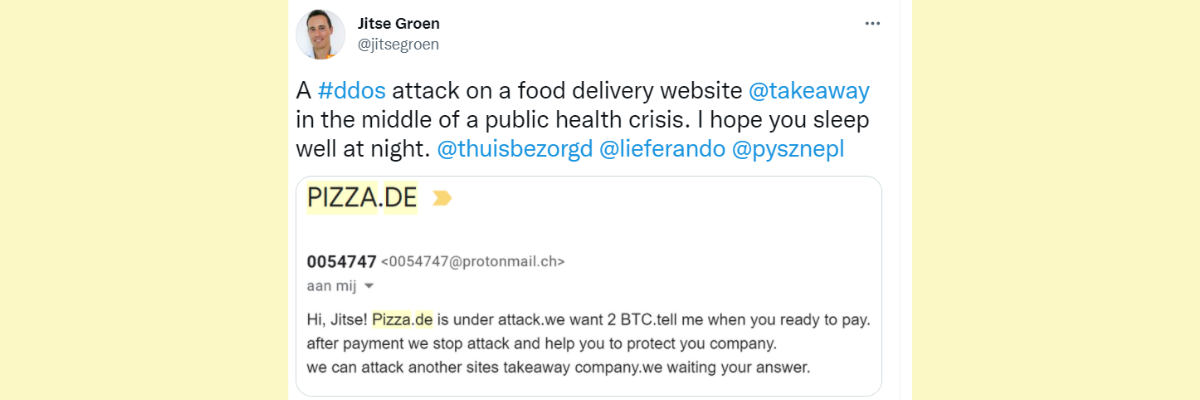
How could they transmit data flawlessly in the new environment? Some adopted solutions like Salesforce and needed to opt for RingCentral Salesforce integration to unite the CMS with fax machines. Others even had to deal with creating websites from scratch. The same applied to existing online stores, which needed to quickly cope with the online traffic and data growth.
What has this rush led to? Many store owners overlooked security issues. New and updated sites had numerous vulnerabilities, and cybercriminals didn’t hesitate to exploit them.
How can you avoid and mitigate the harm? You need to know your cyber enemy. First of all, which security threats exist for eCommerce websites. Here, I’ll tell you about three of them to help you draft your security plan and close the door on penetration attempts.
Three Types of Cyberattacks on eCommerce Websites
Online stores have always been a coveted prize for hackers, be it small or large enterprises. Not to mention crimes are becoming more intense.
Cybercriminals pursue to steal credit card data, imitate the payment page, and receive money on their account. They take a shot at many other more creative ways to deceive users. You make one random click, and even the most prosperous company sinks into crisis.
The result of such crimes can be the following:
- customer data leak;
- trade secret exposure;
- damaged reputation;
- the time needed to re-establish customers’ and partners’ trust;
- loss of financial assets (either as the result of a ransom or restoring your harmed resources).
Let’s see what DDoS, ransomware attacks, and SQL injections are all about. Understanding their features, you’ll know what to expect and how to protect your online store in advance.
1. DDoS Attacks
DDoS, or distributed denial of service, is one of the top cybersecurity concerns online retailers face. It’s one of the oldest tricks in the book and sometimes is considered old-fashioned. That’s why many people often overlook their possible risks.
There are three forms of DDoS attacks, such as:
- Botnet attacks
- Protocol attacks
- Application attacks
They generate a massive spike in traffic and drain the server’s bandwidth. What happens to the requests of real users? They simply can’t be processed by the attacked server due to its overload with malicious requests.
These attacks damage network infrastructure (such as firewalls and load balancers). They send junk communication requests and consume network resources. As a result, the network infrastructure becomes overwhelmed and so do the servers.
They happen at the level of requests to an application. These requests don’t overload the hardware themselves. Instead, they launch resource-intensive processes and consume excess disk space or memory until the target service fails.
The mentioned above attacks may exist in separate forms. But attackers often combine two or all three types of assaults into one. Hackers employ tools like LOIC to launch a DDoS attack from a web browser and overload targets with packets, such as:
- UDP;
- TCP;
- HTTP.
Note that DDoS attacks sometimes serve as a distraction tactic to steal customer credit card details and other sensitive information from the victim.
To provide an example, Lieferando, a German meal delivery business, faced a large DDoS attack in 2020. Cybercriminals crippled Lieferando’s server and demanded two bitcoins to stop it. As the company couldn’t process orders, it had to refund money to its customers. That’s the tweet of its founder and CEO, Jitse Groen.

Is There Any Solution to Combat DDoS Attacks?
Implement a CDN or smart DSN to add an extra layer for addressing DNS queries.
How can you reduce the attack surface and restrict traffic to certain infrastructure? Use Load Balancers to put computation resources behind them. To get complete control over the traffic, utilize firewalls or ACLs.
2. Ransomware
Ransomware is a program that encrypts files on the victim’s computer. And hackers demand money for their decryption.
In fact, it’s a network worm. It independently spreads on the Internet and local networks through software vulnerabilities, especially in Microsoft Windows.
How does such an attack happen? A victim gets an email with an infected link or a file. They click on it and either go to a malicious website or download the file. And that’s how a cryptoworm begins to spread and affect essential data, such as:
- photos;
- documents;
- databases;
- even the entire system.
How can a victim stop it? They have to pay the criminals to restore access to the files.
Is there any way to identify the lawbreaker? No, they usually accept only Bitcoins, so their names remain unknown.
You may have heard about WannaCry. It’s one of the most well-known ransomware assaults. The software contaminated computers through a vulnerability in the Windows SMB network protocol (also known as EternalBlue).
It hid data by encrypting all files on the hard drive except those needed for its operation. Then, it displayed a request to transfer bitcoins to the specified account. Here’s a screenshot of the alert.

What could a person or a company do? They paid the sum and received a decryption key. But the key was ineffective as the WannaCry code had a bug. Experts estimate the damage from WannaCry to be $1 billion.
How Can eCommerce Stores Protect Themselves From Ransomware?
The main ransomware security measures for eCommerce businesses include:
- installing Microsoft patches;
- educating employees on cyber protection and technoliteracy;
- updating antivirus and antimalware software;
- visiting nomoreransome.org in case of encryption;
- backing up your files.
3. SQL Injections
Another type of malicious attack on your watch list is SQL injection. This infection harms your websites and web applications working with relational databases.
How does an SQL injection work? Hackers put malicious code into a query which happens because of back-end flaws. Then they can control the hacked store database, for example:
- changing the store’s content;
- deleting, modifying, or adding the entire database;
- stealing credit card information;
- disclosing admin credentials to launch more attacks;
- executing arbitrary commands on the attacked server.
The malicious query can get to your website’s database as a result of:
- identified module and plugin flaws;
- custom code issues;
- errors in the eCommerce platforms.
For example, Magento had a vulnerability, PRODSECBUG-2198. It jeopardized more than 300,000 of its stores due to the possibility of credit card skimming. And here we talk about eCommerce giants who appreciate Magento for its high customization and scalability.
Another example of protecting a Magento store is the migration to Magento 2. Last year was final when Magento 1 got official support. As a result, Magento 1 stores stopped receiving updates, security patches, etc.
Are you still on Magento 1? You shouldn’t postpone your move to Magento 2. If you worry about the struggle with technical requirements, think about the security your store lacks.
What Should You Do to Protect an eCommerce Store from SQL Injections?
Protection from SQL injection lies in checking your site and correcting bugs immediately. The steps include:
- updating your system;
- applying suitable security patches;
- conducting security checks with automated testing tools.
Final Word
We’ve covered three major cybersecurity threats for the eCommerce sector. But there are others an online retailer may encounter, and cutting-edge technologies don’t always guarantee protection.
For example, artificial intelligence is developing. It helps make transactions more secure but at the same time encourages hackers to look for loopholes and complicate their crimes.
Do you think enormous destruction stems from the attack itself? No, the elimination of its consequences is harder. So you need to detect and disrupt cyberattacks before they become a problem.
What should be on your cybersecurity program? You should invest in this area, pay attention to security audits, and remember that it affects your sales and customer trust no less than marketing and customer service do.
About Alex Husar
 Alex Husar, chief technology officer at Onilab.com with almost a decade of successful Magento migration and PWA development projects for eCommerce companies around the globe. Being a Computer Software Engineering specialist, Alex is equally competent both in terms of full-stack dev skills and the capability to provide project-critical guidance to the team.
Alex Husar, chief technology officer at Onilab.com with almost a decade of successful Magento migration and PWA development projects for eCommerce companies around the globe. Being a Computer Software Engineering specialist, Alex is equally competent both in terms of full-stack dev skills and the capability to provide project-critical guidance to the team.